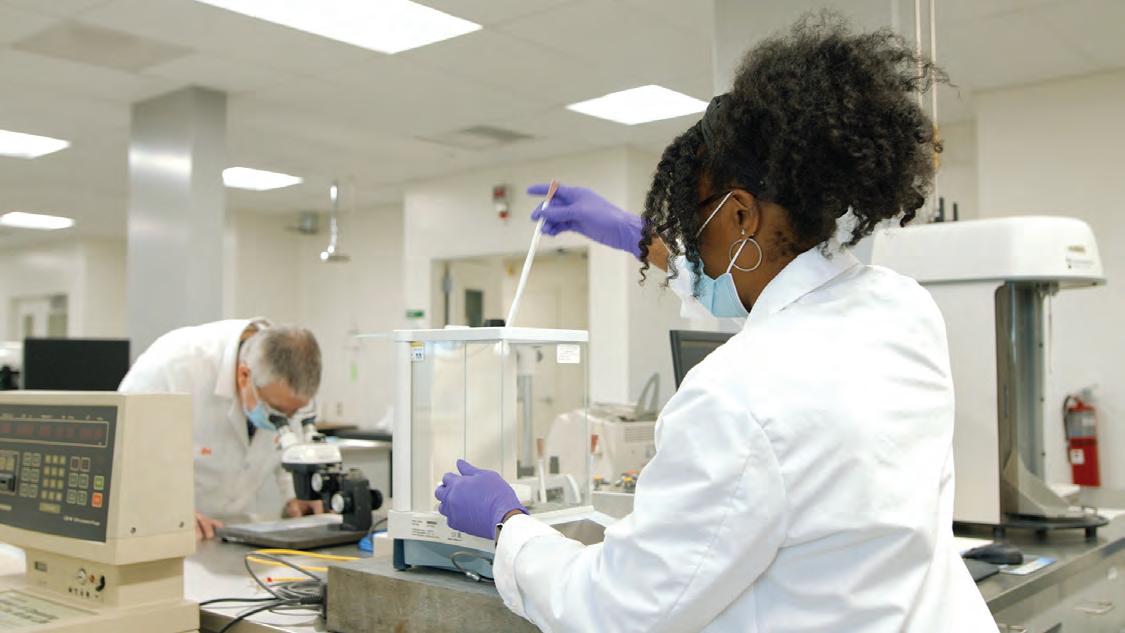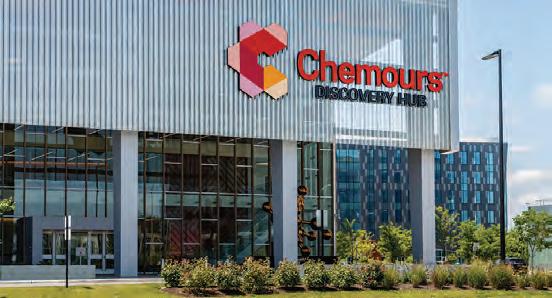
3 minute read
Innovating to Solve Tomorrow’s Challenges
The importance of championing regulatory frameworks that will enable global leadership in innovation
BY KATHY O’KEEFE
IN A WORLD INCREASINGLY DEFINED by rapid technological change and global challenges, innovation is not just a competitive advantage — it’s a necessity. For Delaware, a state with a proud legacy of industrial ingenuity, the opportunity to lead in solving tomorrow’s problems is not only within reach — it’s already underway.
At the heart of this momentum is the University of Delaware’s STAR Campus, which is home to Chemours Discovery Hub (CDH), a state-ofthe-art research facility. With over 130 labs and more than 300 scientists, engineers, and researchers, CDH is a beacon of American innovation. It’s where science meets purpose, and where the next generation of essential chemistries and technologies are being developed to address the challenges of tomorrow.
Take, for example, liquid cooling — a breakthrough technology developed for data centers and other applications. As artificial intelligence drives exponential demand for computing power, traditional air-cooling systems are reaching their cooling ceiling. Chemours’ Opteon™ two-phase liquid cooling solution can reduce energy use by up to 90%, cut water consumption nearly to zero, and shrink the physical footprint of data centers by as much as 60%. It’s a game-changer for an industry that underpins our digital economy.

But innovation doesn’t happen in a vacuum. It requires a regulatory environment that supports progress rather than stifling it. Unfortunately, the current U.S. regulatory framework is falling short. Companies face years-long delays in getting new products and chemistries approved for use — delays that threaten to send American innovation overseas. These bottlenecks introduce vulnerability to the U.S.’ global leadership as companies take their innovations to outside markets with fewer regulatory hurdles. These hurdles also impede the U.S. from achieving a more sustainable future by delaying the introduction of new chemicals that are more sustainable and safer.
To maintain our edge, the U.S. must modernize its regulatory systems. That means bringing clarity and efficiency to programs like the Toxic Substances Control Act, aligning federal and state permitting processes, and ensuring that regulators understand the real-world applications and benefits of the chemistries they oversee. Without these reforms, we will watch American breakthroughs scale in other countries.
As we look to the future, the message is clear: innovation is the engine of economic growth, sustainability, and national security. But it needs the right fuel — investment, talent, and a regulatory framework that keeps pace with the speed of science.
Delaware is uniquely positioned to lead this charge. With its strong academic institutions, vibrant business community, and history of public-private collaboration, the First State can be a model for how innovation and regulation can work hand-in-hand. The Chemours Discovery Hub is proof of what’s possible when science, industry, and policy align.
Kathy O’Keefe serves as the chief sustainability officer at Chemours.

